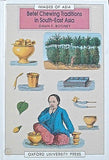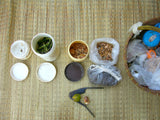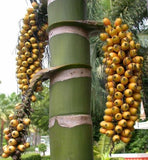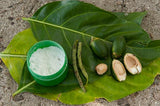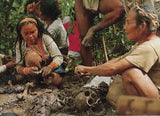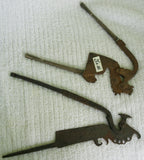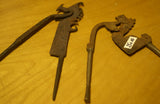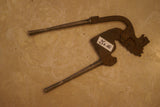1800’s Very Rare Old Traditional Ethnic Iron Betel Areca Nut Cutter, Cracker, called Kacip (Kecil) Iron Tool with silver handles, Collected in Sumatra in the 1970's, Lion Head Motif. 19th century, Indonesia
Rare antique cutter, seen on the first photo by itself, with a lion’s head and silver handles, and seen on some of the additional photos with another tool, also listed in our sales.
This is a wonderful rare antique silver and Iron Betel Nut Cutter (Kacip Kecil), from Indonesia, once belonging to royalty, and dating from the19th Century, with the powerful head of a mythical lion as a top motif (singha): Here, the detailing of the lion’s head, with a delicate profile, expresses the artistic vitality and detailed elegance typical of these types of important traditional instruments from the past. This traditional nut cracker or kacip, from the early 1800’s, is a very old tool made of a combination of iron and real silver, and essential to open the Betel nut.
Collected in Sumatra 50 years back, it was part of our private collection.
Measures around 9" long.
Made of silver & iron. Museum quality.
The chopper, or reather slicer, is a tool used by older people when they lose their teeth and can no longer chew betel nut whole, the hard fruit of the Areca palm. It is made by attaching a beautifully, in this case, silver carved handle to a steel chisel blade which fits inside a deep mortar. The betel chewer inserts the betel nut and chops and crushes it before wrapping with the pepper leaf and white lime powder to create a mildly narcotic called betel nut chew.
This Indonesian nutcracker, early 19th century, was originally used to cut pieces of Areca palm nut--commonly referred to as betel nut, in order to practice the chewing betel habit, a cultural tradition in Southeast Asia, practiced for thousands of years: After cutting the nut, a few slices are wrapped into a spicy pepper leaf, and chewed for their effects as a mild stimulant.
This hinged instrument is used to slice the areca nut which is then wrapped in a betel leaf along with lime from seashells. Other ingredients such as tobacco or spices may be added. The quid is then placed in the mouth between the gum and the cheek and is left there for hours. This produces a large amount of red saliva which in turn discolors the user’s lips, gums and teeth. The betel cutter may be made of various metals, but the cutting blade is always iron.
The areca nut, for older people, posed a different problem not solvable with a regular nut cracker: It needed shredding and cutting, not cracking. Thus, a slight variation of design transformed the normal nutcracker into a nut-cutter. These nut cutters were mostly used to cut, peel, or shred finely, each areca nuts. Their recorded use goes back at least 700 years.
HISTORY
Betel nut chewing is ancient and common throughout Southeast Asia. It is recreational, a sign of hospitality and an important part of many ceremonies. The nut of the areca palm is wrapped in a betel nut leaf along with crushed lime - originally from sea shells - and sometimes tobacco and spices. The whole quid is chewed for hours.
It is mildly narcotic and produces a lot of saliva, which is spat out. Teeth turn red.
Every ingredient and process has its own container or implement and is today highly collectible.
Betel nut crackers come in a wide variety of styles, shapes and sizes. Many are lavishly decorated, in the shape of ancestors, winged horse, rooster and other figures and sometimes enriched with silver handles.
For hundreds of years, betel nut has been the traditional "soft drug" of choice in most of Southeast Asia. A modest stimulant, it produces a "high" similar to that obtained by chewing coca leaves. Betel nut is actually a bit of a misnomer since a "chew" is composed of three elements: the seed of the Areca palm, the fruit or leaf of the betel pepper vine, and mineral lime made by burning seashells. The lime is kept in a container and taken to the mouth with an implement. The overall taste thus consists of the spicy flavor of the pepper leaf, the dry "muddiness" of the Areca palm nut, and the astringent bite of the lime. Although it cannot be compared to the potent drugs of the West, betel nut chewing is still highly addictive, and a betel-nut fog has been induced in bona fide addicts who chew up to 100 nuts a day & use a lot of lime as well.
The chewing habit is linked to various orders of activities and to various trends: a habit inherited from the ancients, influenced by social class, which became a subconscious necessity to induce excitement to help these countries with a depressive climate, sharing beliefs and customs of the group. But the betel quid has a primary role in social relations, in public and private ceremonials for people taking it. Furthermore, the betel custom relates to a specific cultural area, a characteristic link for some civilizations.
All our collector and rare items come with pages and pages of research about provenance, and with history of the tribes and photos as well, depending on item and whenever possible. When shipping internationally, we group ship multiple purchases to save you money, and find the best rates available. If you have any questions or want to see research conducted on this piece and photos of tribes, let us know.







































